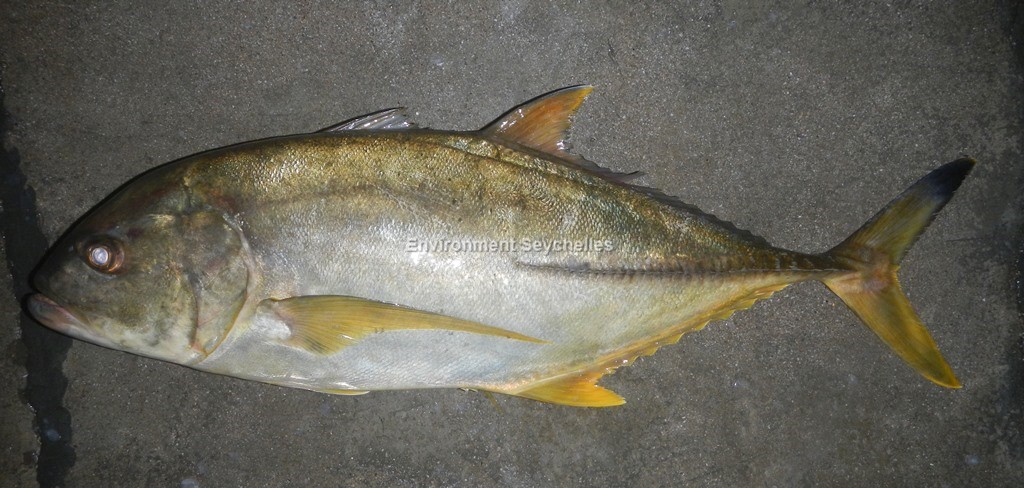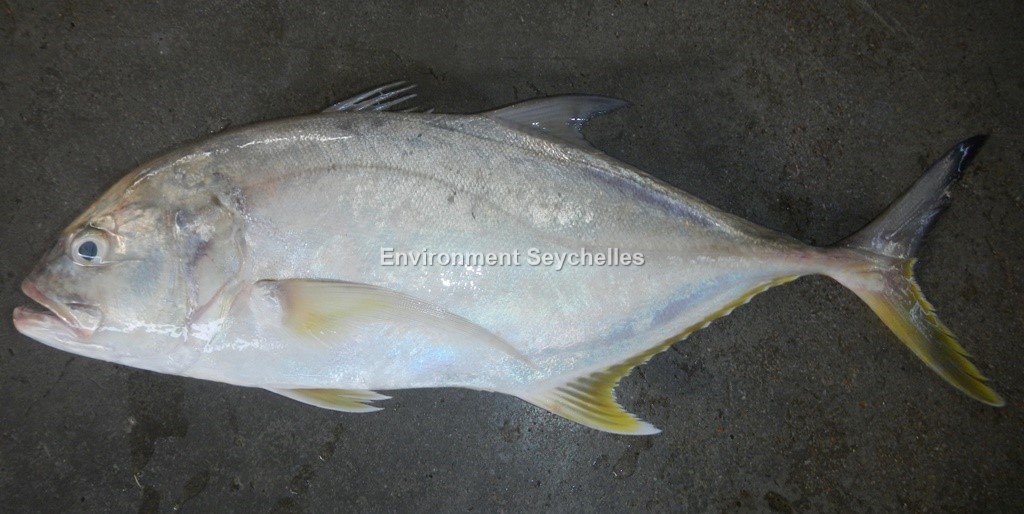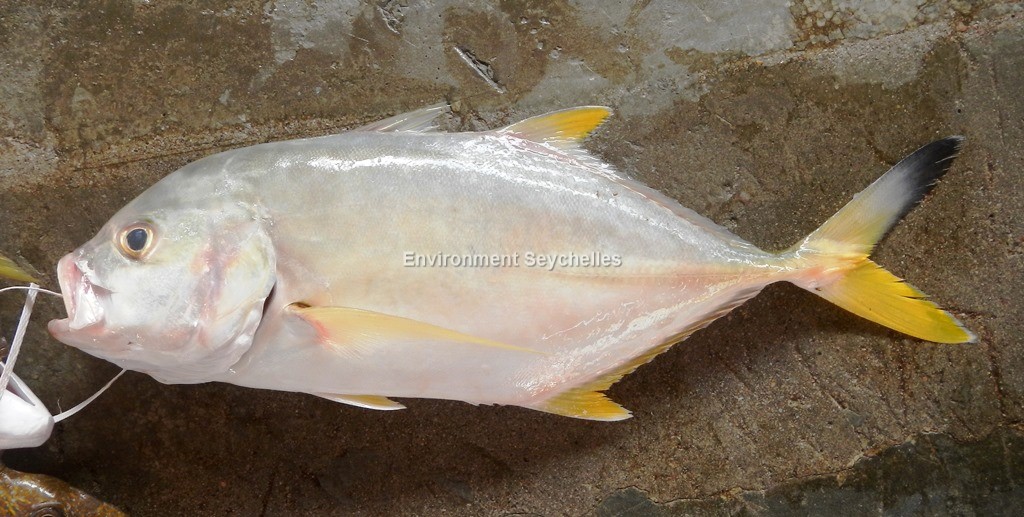Description:
Dorsal spines: 9; Dorsal rays: 19-21; Anal spines: 3; Anal soft rays: 15-17.
Compressed, oblong body with dorsal profile much more convex than ventral profile, particularly anteriorly. Adipose eyelids moderately well developed. Dentition consists
of an outer row of widely spaced canines and an inner band of villiform teeth in the upper jaw and a row of widely spaced conical teeth on the lower jaw. Breast scalation
variable, completely scaly to scaleless ventrally. Lateral line is moderately arched anteriorly. Caudal fin is strongly forked.
Colour: dark bronze to yellow-green dorsally, shading to silvery bronze to yellowish or yellowish green ventrally. Yellow to dusky caudal fin with distinctive black-tipped
upper caudal lobe - especially in juvenile. Other fins range from bright yellow to dusky with little yellow at all.
Size:
Maturity: Lm 50cm FL. Range unknown. Max Length: 88cm TL.
Habitat and Ecology:
Adults inhabit clear coastal waters, over rocky reefs, but also open sandy areas (depth 5-20m). Juveniles also found in large bays and estuaries. Solitary or in small
shoals, with juveniles more commonly found in shoals. Benthopelagic predator feeding on reef fish, anchovies, clupeids, squid, shrimp, crabs and small crayfish.
Fishery Status:
This species is not protected or subject to fishery regulations. It is caught in net fisheries particulalr those targeting smaller semi-pelagics, and in particualr when young.
It is also caught in the hand line fishery where it is an occasional and not numerous component of the catch.
Reportedly readily takes bait or lures and provide excellent sport on fly fishing tackle.
Notes:
References:
Caranx heberi in Fishes of Australia, http://fishesofaustralia.net.au/Home/species/4825 (11/09/18)
EOL: Caranx heberi, Blacktip trevally, http://eol.org/pages/1012120/overview (11/09/18).
Froese, R. & D. Pauly. Eds. (2018). FishBase. https://www.fishbase.de/summary/Caranx-heberi (11/09/18)
Heemstra, P. & Heemstra, E. (2004). Coastal Fishes of Southern Africa. NISC, SAIAB, ISBN 1-920033-01-7
Smith-Vaniz, W.F. & Williams, I. (2016). Caranx heberi (errata version published in 2017). The IUCN Red List 2016: e.T20430563A115376816. http://dx.doi.org/10.2305/IUCN.UK.2016-3.RLTS.T20430563A46664094.en. (11/09/18).
Citation:
Nevill, J.E.G. (2019). Caranx heberi, Blacktip trevally. Seychelles Seatizens. www.seatizens.sc. https://seatizens.sc/species/caranx-heberi-bennett-1830/ (edited 13/06/22).




Thank you ever so for you post.Thanks Again. Awesome.
Really enjoyed this blog.Thanks Again. Fantastic.
This is one awesome blog.Really thank you! Much obliged.
I appreciate you sharing this article.Much thanks again. Want more.
Im obliged for the blog.Thanks Again. Great.
Very neat post.Really thank you! Will read on…
Thanks for sharing, this is a fantastic article post.Really looking forward to read more. Much obliged.
Hey, thanks for the blog.
Enjoyed every bit of your post.Really looking forward to read more. Fantastic.
I think this is a real great blog article.Much thanks again. Awesome.
I am so grateful for your blog post.Thanks Again. Want more.
Muchos Gracias for your article.Much thanks again. Great.
Really appreciate you sharing this article.Much thanks again. Awesome.
Very informative post.Thanks Again. Really Great.
Really appreciate you sharing this blog.Thanks Again. Much obliged.
Appreciate you sharing, great article.Much thanks again. Really Great.
Thanks so much for the article post.Much thanks again. Really Great.
Very neat article.Thanks Again. Fantastic.
Hey, thanks for the blog article. Really Cool.
Very informative blog.Really looking forward to read more. Really Great.
I value the article.Really thank you! Cool.
Really enjoyed this blog article.Much thanks again. Awesome.
Major thanks for the blog article.
Thanks-a-mundo for the article.Much thanks again. Really Great.